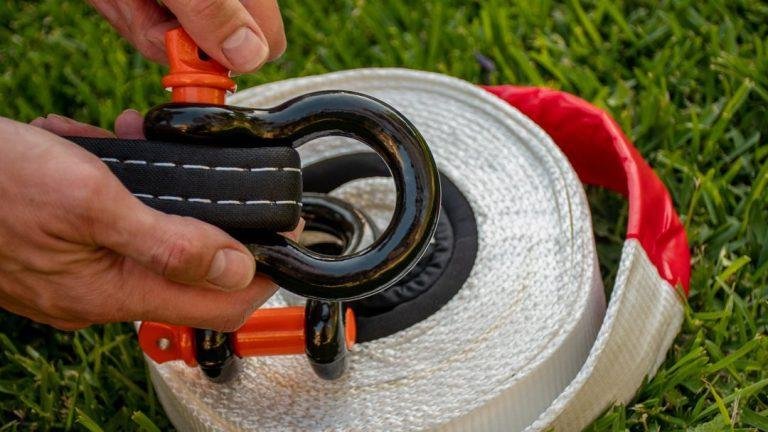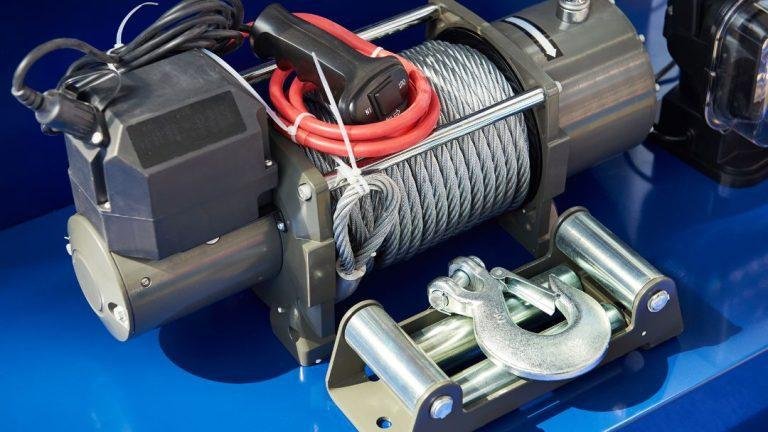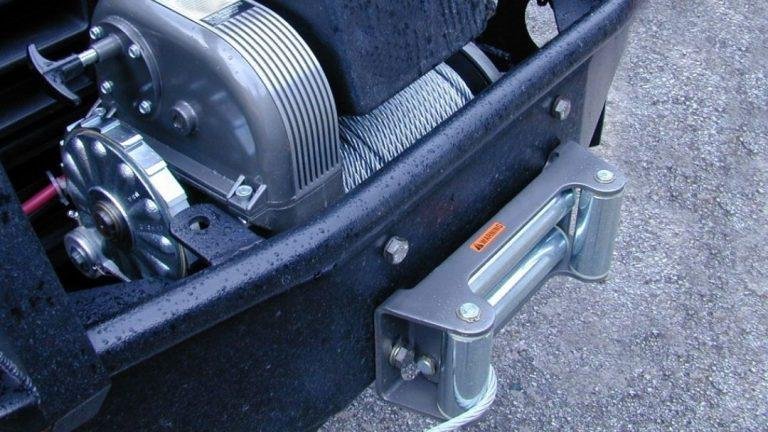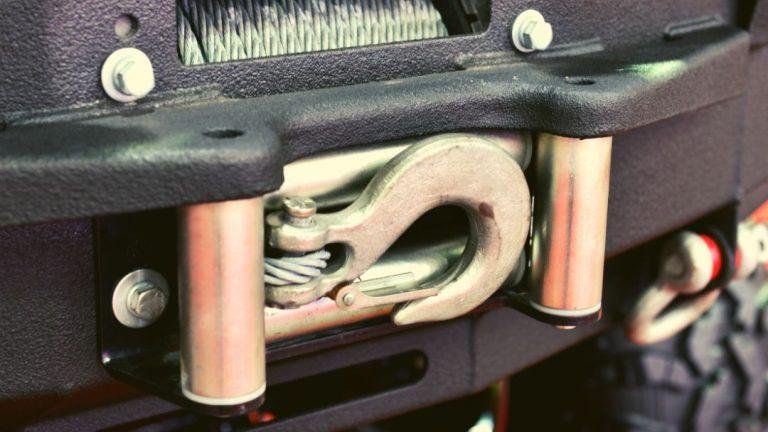To attach a winch strap to a winch, loop the strap through the winch drum, and securely fasten the hook to a secure anchor point. This ensures proper functionality and safety during use.
When attaching a winch strap to a winch, it is essential to follow the correct procedure for optimal performance and safety. By looping the strap through the winch drum and securely fastening the hook to a secure anchor point, you can ensure that the winch will function effectively.
This ensures that the winch strap can bear the load and provides reliable support during use. By taking these steps, you can securely attach the winch strap to the winch, allowing for efficient operation and preventing any mishaps that may occur during pulling or towing activities.
Getting Started With Winch Straps
To attach a winch strap to a winch, start by ensuring the winch drum is properly aligned. Then, feed the strap onto the drum, making sure it is evenly distributed. Finally, secure the end of the strap and tighten it using the winch’s handle for a secure and reliable connection.
Introduction To Winch Straps And Their Importance:
- Winch straps are an essential tool for securing loads during transportation. They are widely used in various industries, including shipping, logistics, and construction.
- These straps are made from high-strength materials like nylon or polyester, allowing them to withstand heavy loads and provide reliable support.
- The importance of winch straps cannot be underestimated, as they play a crucial role in preventing cargo from shifting or falling off during transit, ensuring safety on the road.
Understanding The Components Of A Winch Strap:
- Winch straps consist of several key components that work together to form a secure and durable securing system:
- Hooks: These are the end fittings of the winch strap that attach to the winch drum or anchor point.
- Webbing: The main body of the winch strap, is usually made from durable materials like nylon or polyester.
- Tensioning device: A ratchet or winch mechanism used to tighten the strap and secure the load.
- Load attachment point: The point on the cargo where the winch strap should be connected.
- Winch drum: The part of the winch where the strap is wound or unwound during operation.
Choosing The Right Winch Strap For Your Needs:
- When selecting a winch strap, it’s essential to consider the specific requirements of your load and the working conditions. Here are some factors to consider:
- Load capacity: Determine the weight of your cargo and choose a winch strap with an appropriate load capacity to ensure it can handle the load safely.
- Length and width: Consider the dimensions of your cargo and select a winch strap that provides adequate coverage and support.
- Material: Different materials offer different levels of strength and durability. Nylon winch straps are known for their high strength, while polyester winch straps have excellent resistance to UV rays and abrasion.
- End fittings: Choose hooks or end fittings that are compatible with your winch and offer secure attachment points.
- Safety features: Look for winch straps with safety tags, markings, or indicators that ensure compliance with industry standards and regulations.
Remember, properly attaching a winch strap to a winch requires attention to detail and following manufacturer guidelines. By understanding the components of a winch strap and selecting the right one for your needs, you can ensure safe and reliable load transportation.
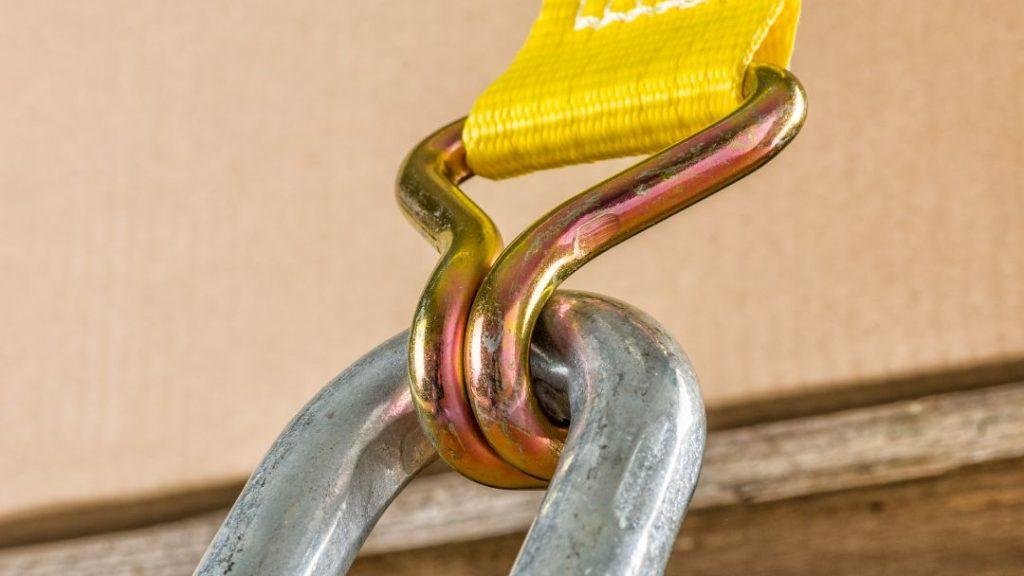
Preparing The Winch And Strap
To attach a winch strap to a winch, start by ensuring the winch is securely mounted and the winch drum is easily accessible. Then, thread the strap through the winch drum and securely fasten it. Confirm that the strap is properly aligned and tightly secured before using the winch for towing or lifting tasks.
Inspecting The Winch For Any Damage Or Issues:
When it comes to attaching a winch strap to a winch, one of the first steps is to inspect the winch itself. This ensures that it is in good working condition and free from any damage or issues that could affect its performance.
Here are some important points to consider:
- Check the winch for any visible signs of damage, such as cracks, dents, or rust. Make sure that all parts are intact and secure.
- Test the winch by operating it without the strap attached. Pay attention to any unusual sounds or vibrations that could indicate a mechanical problem.
- Make sure that all moving parts, such as the gears and brake system, are functioning properly. Look for any signs of wear or excessive corrosion.
- Verify that the winch cable or rope is properly wound onto the drum and not tangled or kinked. This ensures smooth operation and prevents unnecessary strain on the winch.
Proper Cleaning And Maintenance Of The Winch:
To ensure the longevity and effectiveness of your winch, proper cleaning and maintenance are crucial. Here are some guidelines to follow:
- Regularly clean the winch using a mild soap or detergent and warm water. This helps remove dirt, grime, and debris that can accumulate over time, causing friction and potential damage.
- Rinse the winch thoroughly to remove any soap residue, as it can attract dirt and accelerate wear.
- Inspect the winch components, such as the drum, gears, and brake system, for any signs of wear or damage. Replace any worn-out or damaged parts promptly.
- Lubricate the moving parts of the winch, such as the gears and brake system, with a suitable lubricant. This minimizes friction and ensures smooth operation.
- Keep the winch protected from extreme weather conditions and store it in a dry and secure place when not in use. This helps prevent rust and other forms of corrosion.
Unraveling And Inspecting The Winch Strap For Any Wear Or Tear:
Before attaching the winch strap to the winch, it is essential to inspect it thoroughly for any wear or tear. Here’s what you need to do:
- Unravel the winch strap completely and lay it flat on a clean surface. This makes it easier to examine the entire length of the strap.
- Check for any signs of wear, such as frayed or broken fibers, along the length of the strap. These areas indicate weak points that could fail under load.
- Inspect the stitching and edges of the strap for any signs of damage or unraveling. Damaged stitching can compromise the strap’s strength and durability.
- Look for any discoloration or signs of chemical or UV damage. Exposure to harsh chemicals or prolonged sunlight can weaken the strap over time.
- Ensure that the winch hook or attachment point is securely fastened and free from any obstructions or damage. A faulty or damaged attachment point can lead to accidents or strap failure.
Remember, proper inspection, cleaning, and maintenance of both the winch and winch strap are essential for safe and efficient operation.
Attaching The Winch Strap To The Winch
To attach a winch strap to a winch, start by securing the strap to the drum of the winch. Next, make sure the strap is tightly wrapped around the drum and insert the hook into the designated slot. Finally, lock the hook in place and ensure a secure connection before operation.
When it comes to attaching the winch strap to the winch, it’s essential to understand the attachment mechanism of the winch. This ensures that the strap is securely fastened and ready for use. Here’s a step-by-step guide on how to attach the winch strap to the winch effectively:
Understanding The Attachment Mechanism Of The Winch
- Begin by familiarizing yourself with the winch’s attachment mechanism. This may vary depending on the type of winch you have, so refer to the manufacturer’s instructions for detailed guidance.
- Ensure that the winch is securely mounted on a stable surface. This will provide a solid foundation for the attachment process.
Securing The End Of The Winch Strap To The Winch Drum
- Start by locating the end of the winch strap that will attach to the winch drum. This end typically has a loop or hook for secure attachment.
- Place the loop or hook over the winch drum, ensuring a snug fit. The strap should sit securely without any slack.
- Double-check the attachment to ensure it is secure and unable to slip off during use.
Properly Threading The Winch Strap Through The Winch Mechanism
- Begin by loosening any tension on the winch drum so that the strap can be easily threaded.
- Locate the designated pathway for the winch strap. This is typically a groove or channel that guides the strap through the winch mechanism.
- Insert the winch strap into the designated pathway, making sure it follows the intended route without any twists or tangles.
- Continue threading the winch strap until the desired length is achieved or until instructed otherwise by the manufacturer.
- Once the strap is properly threaded, tighten any tension on the winch drum to secure the strap in place.
By following these steps, you can attach the winch strap to the winch correctly. This will enable you to utilize your winch effectively and safely during various applications. Remember to always consult the manufacturer’s guidelines and ensure a secure attachment before using the winch.
Ensuring Proper Tension And Alignment
Properly attaching a winch strap to the winch involves ensuring the right tension and alignment, guaranteeing effective and safe operation. Learn the correct steps for securing the strap to prevent damage and accidents.
Adjusting The Winch Strap Tension For The Load Being Secured
To ensure the safety and effectiveness of using a winch strap, it is crucial to adjust the tension according to the load being secured. Here are the steps to follow:
- Evaluate the weight and size of the load: Before attaching the winch strap, assess the load to determine the appropriate tension needed.
- Loosen the winch drum: Release any existing tension on the winch drum by turning it counterclockwise. This will allow for easier attachment of the winch strap.
- Attach the hook of the winch strap: Fasten the hook securely onto the designated attachment point of the load, ensuring it is properly positioned.
- Tighten the winch drum: Begin turning the winch drum clockwise to retract the winch strap, gradually increasing tension as needed.
- Monitor the tension: Constantly monitor the tension applied to the winch strap, making adjustments as required. It is essential to strike the right balance between tightness and avoiding over-tightening.
- Secure the load: Once the desired tension is achieved, ensure that the load is securely fastened and stable before proceeding.
Aligning The Winch Strap For Optimal Pulling Power
For optimal pulling power and to prevent strap damage, proper alignment of the winch strap is vital. Consider the following guidelines when aligning the winch strap:
- Straighten the winch strap: Ensure that the winch strap is straight and free from any twists or knots before use. Twisted straps can diminish pulling power and increase the risk of strap failure.
- Position the winch drum correctly: Check that the winch drum is aligned properly with the direction in which the load needs to be pulled. Aligning the drum in the right position minimizes unnecessary strain on the winch strap.
- Use a fairlead: In cases where the winch strap needs to change direction when pulling, using a fairlead, such as a roller or hawse fairlead, can enhance alignment and prevent damage to the strap.
- Maintain a clear path: Ensure that there are no obstacles or obstructions between the winch drum and the attachment point of the load. A clear path prevents the winch strap from rubbing against objects, reducing unnecessary wear and tear.
Techniques For Preventing Winch Strap Slippage During Operation
To ensure that the winch strap does not slip during operation, it is essential to apply the following techniques:
- Properly secure the hook: Ensure that the winch strap hook is correctly attached and securely fastened to prevent accidental detachment during winching.
- Apply tension gradually: Rather than applying sudden, jerky movements, slowly and steadily increase tension on the winch strap to reduce the risk of slipping.
- Use a winch strap lock or stopper: Utilize a winch strap lock or stopper to hold the strap in place, preventing it from slipping or coming loose.
- Regularly inspect the winch drum: Check the winch drum for signs of wear, such as smooth or shiny areas, which can cause the winch strap to slip. If any irregularities are noticed, consider replacing the winch drum.
- Maintain proper strap tension: Ensure that the winch strap maintains sufficient tension throughout the operation to minimize the chances of slippage.
By following these guidelines for tension adjustment, alignment, and preventing slippage, you can safely and effectively attach a winch strap to a winch. Remember to always prioritize your safety and the security of the load being secured.
Tips For Safe And Effective Winch Strap Attachment
Learn how to safely and effectively attach a winch strap to a winch with these helpful tips. Ensure a secure connection and avoid common mistakes for a hassle-free towing experience.
Maintaining proper body position and distance during attachment:
- Stand at a safe distance, ensuring that you have enough space to move around comfortably while working with the winch strap.
- Position your body parallel to the winch, maintaining a stable stance to avoid any unnecessary slips or falls.
- Keep your body aligned with the direction of the winching process, ensuring that you have full control and can react quickly if needed.
Utilizing protective gloves and other safety equipment:
- Always wear protective gloves when attaching a winch strap to the winch. This will provide a better grip and protect your hands from potential injuries caused by rough edges or tension.
- Consider using additional safety equipment such as safety goggles or a hard hat, especially if you are working in a hazardous or heavy-duty environment. Safety should never be compromised.
Double-checking the attachment before beginning the winching process:
- Inspect the winch strap for any signs of wear or damage. This includes checking for fraying, tears, or weak points in the strap material.
- Ensure that the hooks or attachment points on both ends of the winch strap are securely fastened and in proper working condition.
- Verify that the winch strap is properly aligned and centered on the winch drum, avoiding any twists or uneven distribution of the strap.
- Test the attachment by giving it a gentle tug to ensure that it holds securely before proceeding with the winching process.
Remember, following these tips for safe and effective winch strap attachment is crucial to prevent accidents and ensure the successful operation of your winching task. Prioritizing safety should always be a top priority, protecting both yourself and your equipment.
Troubleshooting And Handling Issues
Learn how to properly attach a winch strap to a winch with these simple troubleshooting steps. Keep your winching activities safe and efficient by following our easy-to-understand guide.
Identifying Common Problems With Winch Strap Attachment:
- Winch strap not properly attached: Ensure that the winch strap is securely fastened to the winch drum and that it is aligned correctly.
- Misalignment of the winch strap: Check if the winch strap is properly positioned on the drum, as any deviation can lead to issues during operation.
- Twisted or tangled winch strap: Inspect the winch strap for any twists or tangles, as this can affect its functionality and cause it to jam or slip.
- Damaged or worn-out winch strap: Look for signs of wear and tear, such as fraying, cuts, or weakening of the winch strap. A damaged strap may not provide sufficient grip on the drum, leading to attachment issues.
Addressing Winch Strap Jamming Or Slippage Issues:
- Lubrication: Apply a suitable lubricant to the winch drum and strap to reduce friction and prevent jamming or slippage.
- Adjusting tension: Check if the tension on the winch strap is appropriate. Too much tension can cause slippage, while insufficient tension may result in jamming. Adjust as necessary.
- Inspecting drum and gears: Examine the winch drum and gears for any signs of damage or debris that may hinder proper winch strap attachment. Clean or repair if needed.
- Checking for obstructions: Make sure there are no obstructions or foreign objects interfering with the winch strap’s movement. Remove any debris that may be causing the jamming or slippage.
Seeking Professional Help For Complex Winch Strap Problems:
- Consulting a winch specialist or technician: If you encounter persistent issues with winch strap attachment despite troubleshooting, it is advisable to seek professional assistance. A winch specialist can diagnose and address complex problems effectively.
- Expert diagnosis and repair: Professionals have the expertise and equipment necessary to accurately diagnose and repair winch strap attachment issues. They can handle intricate problems that may require specialized knowledge or tools.
- Safety and peace of mind: Engaging a professional ensures that the winch strap is correctly attached, minimizing the risk of accidents or further damage. Moreover, it provides peace of mind knowing that the issue will be resolved efficiently.
Remember to follow proper guidelines and safety precautions when handling winch strap attachment issues. Regular maintenance and timely identification of problems will help in maintaining optimal performance and prolonging the lifespan of your winch strap.
Frequently Asked Questions For How To Attach Winch Strap To Winch
How Do You Attach A Winch Strap To A Winch?
Attach a winch strap to a winch by following these steps: 1. Open the winch and locate the anchor point. 2. Thread the strap through the anchor point and pull it tight. 3. Make sure the strap is securely attached by checking the connection.
4. Test the winch to ensure that it is working properly.
Does The Winch Strap Go Over Or Under?
The winch strap should go under the load to secure it properly.
What Is The Strap For On A Winch?
The strap on a winch is used for securing and pulling heavy objects. It is a durable and strong material that can withstand tension and strain. With the strap, you can wrap it around the object and attach it to the winch.
Once connected, the winch can be operated to reel in the strap, tightening it around the object and exerting force to move or lift it. The strap is designed to provide a secure grip on the load while minimizing damage or slippage.
It is an essential component of the winch system, ensuring safe and effective operation.
How Do You Attach A Cable To A Hand Winch?
To attach a cable to a hand winch, follow these steps: 1. Begin by determining the type of cable needed for the winch. 2. Ensure that the winch is in the “free spool” position to easily attach the cable. 3.
Locate the drum on the winch and locate the hole or slot where the cable will be inserted. 4. Insert the end of the cable through the hole or slot and secure it firmly. 5. Rotate the winch drum to wind the cable around it, ensuring it winds correctly.
6. Once the desired amount of cable is wound, lock it in place using the winch’s locking mechanism. 7. Test the cable’s attachment by engaging the winch and winding it in a controlled manner. 8. Ensure that the cable is properly aligned and will not become tangled during use.
By following these steps, you will successfully attach a cable to a hand winch.
Conclusion
Learning how to attach a winch strap to a winch is an essential skill for anyone who wants to take full advantage of their winching equipment. By following the steps outlined in this guide, you can ensure a safe and effective winching process.
Start by identifying the correct hooking point, making sure it is sturdy and secure. Then, thread the winch strap through the fairlead, ensuring it is properly aligned. Next, attach the hook to the strap and engage the winch. Remember to maintain tension on the strap throughout the winching process and use appropriate safety precautions.
By understanding the proper techniques and practicing them regularly, you can confidently use your winch to its fullest potential. So, get out there and start mastering the art of winching!

